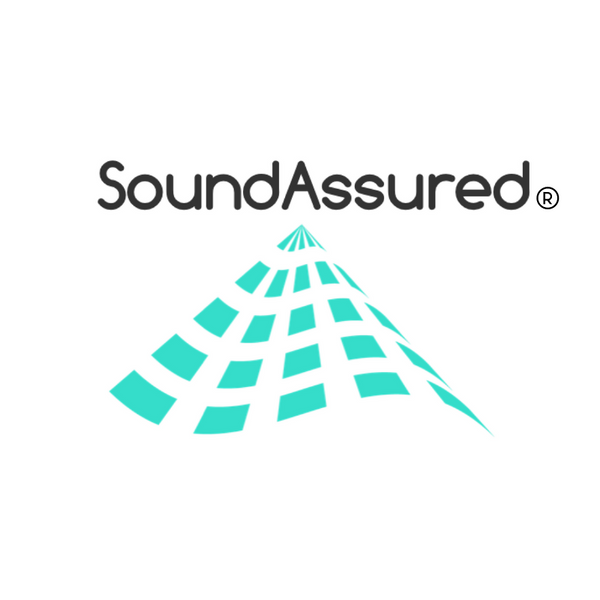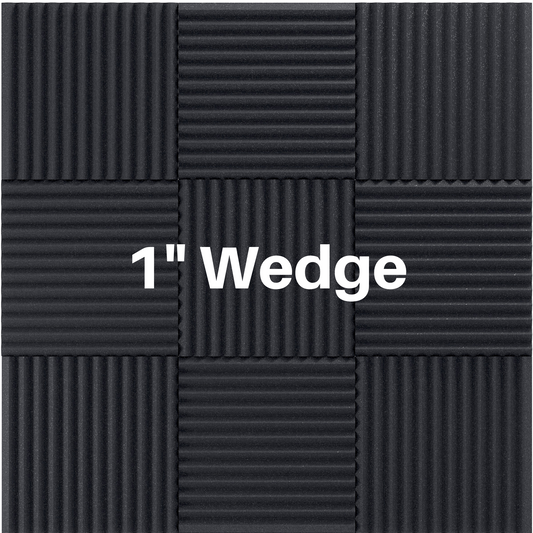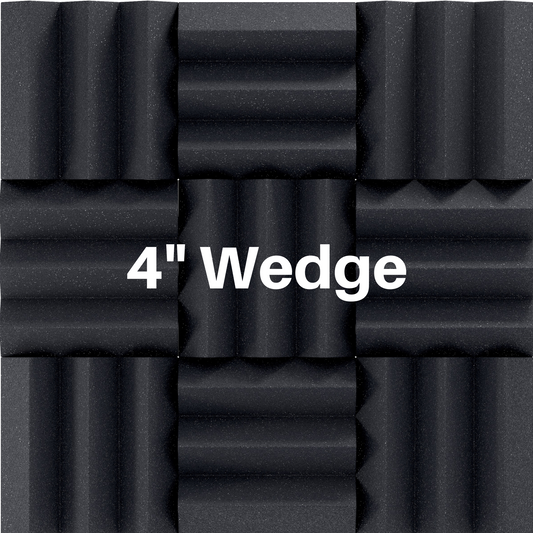Are Acoustic Foam Panels Safe?
Share
The short answer is yes, acoustic foam panels are generally considered safe when used properly. They are designed and manufactured to meet safety standards and regulations. However, if you want to learn more about acoustic foam and it's properties we got you covered!
Material Composition
Acoustic foam panels are typically made from open-cell polyurethane foam. Polyurethane comes in different densities. You may think that the densest foam is the best for sound absorption. However, soft and fluffy things tend to absorb sound better than super dense materials.
Melamine is another type of material that acoustic foam is made of. Melamine is made of a chemical compound that is organic-based and nitrogen-rich. Its durable and heat-resistant qualities make it perfect for acoustic foam panels. Melamine foam is completely safe and is actually the same thing that is used is magic erasers.
We offer white melamine acoustic foam panels that are super popular and safe!
Harmful Chemicals?
One concern associated with foam panels is the potential release of volatile organic compounds (VOCs). While it is true that some foam products can emit VOCs, high-quality acoustic foam panels are often designed to be low in VOC emissions. It is crucial to choose foam panels from reputable suppliers who prioritize safety and quality in their manufacturing processes.
The off-gassing of VOC emissions is more common in newly manufactured foam products and tends to decrease over time as the foam ages. All of the off-gasing has already been completed before our foam is cut and shipped.
Another thing to watch out for is PBDEs. Polybrominated Diphenyl Ethers, are a class of flame retardant chemicals that were commonly used in various products, including furniture, electronics, and textiles, to reduce their flammability. We do not use and of these chemicals in our foam.
Fire Safety Measures
Most acoustic foams are also fire retardant. This means it is designed to resist catching fire and slow down the spread of flames. Some foams have fire retardant chemicals sprayed on the outside of them. Our acoustic foam formula is fire retardant without spraying chemicals onto the outside. To learn more about fire retardancy check out this post.
To enhance fire safety, it is recommended to keep foam panels away from direct sources of heat and ensure that fire safety measures are in place in the room.
Want to check out our foam properties and fire rating? Click the PDF link below.
PDF - Acoustic Foam Installation & Product Care Guide
Quality Assurance
To ensure the safety of acoustic foam panels, it is crucial to purchase them from reputable suppliers who prioritize quality and safety. Look for foam panels that meet relevant fire safety standards and have undergone rigorous testing and certification processes. Choosing trusted manufacturers will minimize any potential risks associated with using acoustic foam panels.
We have been serving happy customers with safe acoustic foam since 2016, and are trusted by folks doing DIY projects and commercial projects.
Check out our foam at the MET in NYC below!

Send us a message if you have any questions about our foam or your acoustic treatment! We are glad to help!








